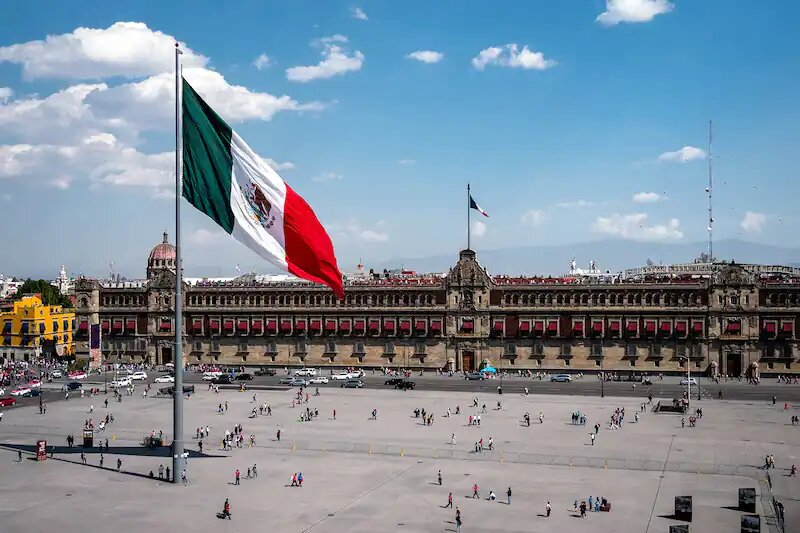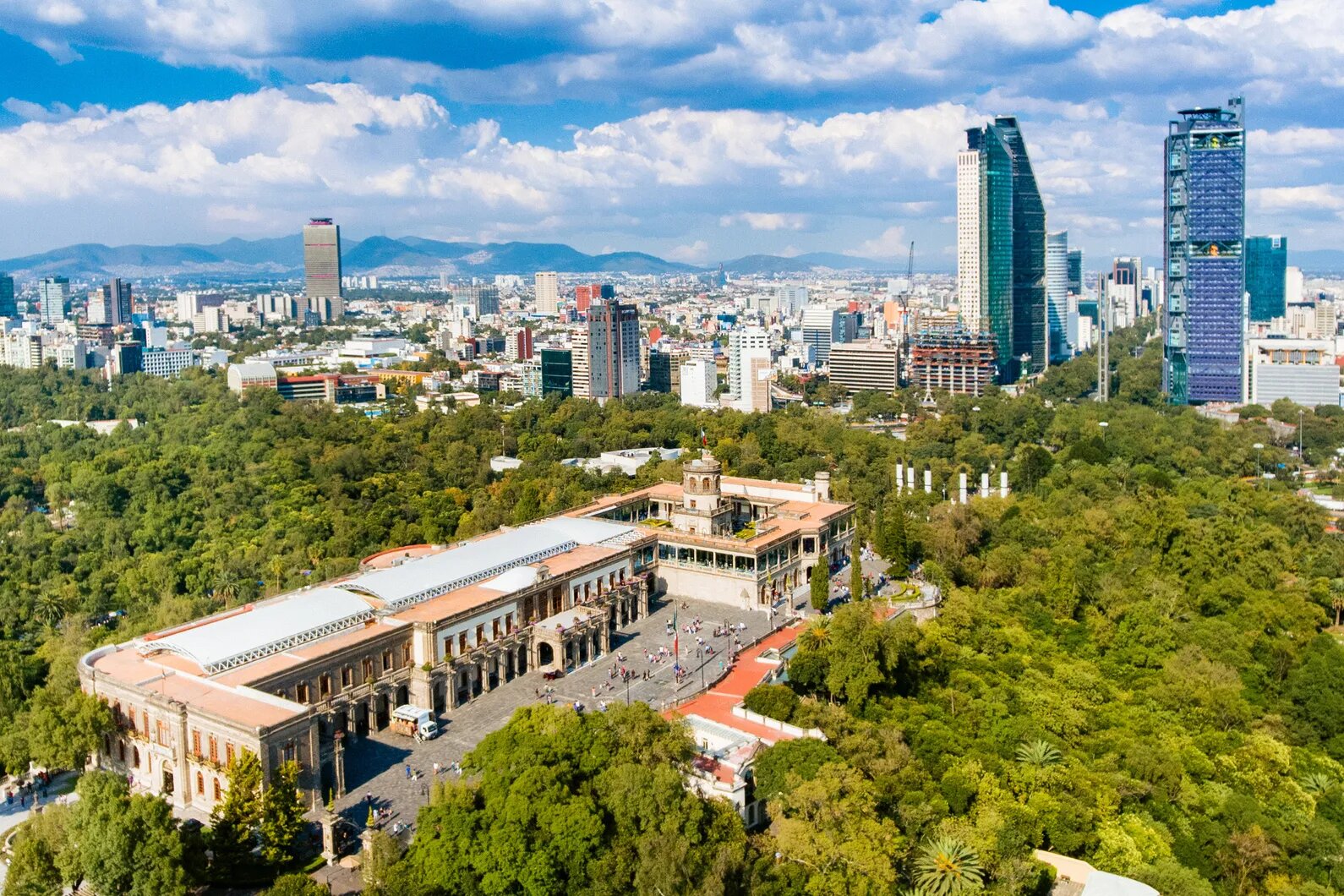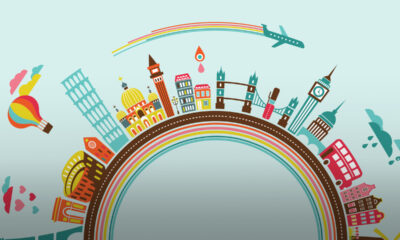Travel
The Top 10 Things To Do In Mexico City

Mexico City, which was built on the ruins of the ancient Aztec city of Tenochtitlan, is one of the Americas’ oldest and largest. Colonial architecture, iconic artwork, spicy cuisine, and a rich cultural heritage provide visitors with an endless range of activities to suit any appetite.
1. Centro Histórico: City of Palaces

On Lake Texcoco in the Valley of Mexico, the Aztecs built a canal-connected island city with fortresses. In the 16th century, Spanish conquerors destroyed the island, drained the lake, and built a “city of palaces” over the ruins. The 10-acre Mexico City Historic Center’s museums, cathedrals, and temples reveal a rich history. The Zócalo, the city’s main public square, is second in the world after Moscow’s Red Square and near several important sites.

Visitors can see the president’s offices at Palacio Nacional. The Diego Rivera-decorated colonial building is on the site of Moctezuma’s palace. The Americas’ largest cathedral, the Mexico City Metropolitan Cathedral, was built over 200 years in Renaissance, baroque, and neoclassical styles.
2. Xochimilco: Where the Flowers Grow

Xochimilco, the “Venice of the New World,” is a series of man-made islands south of Mexico City with a canal network. Xochimilco, meaning “where the flowers grow,” is known for its chinampas, or floating gardens. Farmers built mud-slathered reed rafts on the lake and grew fruits, vegetables, and flowers. Gardens grew into islands. Trajineras, colorful flat-bottom boats, transport passengers through canals on weekends. Small boats bring drinks and snacks to lively passengers on the waterways. The only pre-Hispanic lagoon land use in Mexico City was preserved in the floating city, a UNESCO World Heritage site since 1987.

3. Teotihuacan: City of the Gods

Mexico has more UNESCO World Heritage sites than any other country in the Americas, including Teotihuacan 45 minutes northeast of Mexico City. The monumental Temple of Quetzalcoatl and the Pyramids of the Sun and Moon line the Avenue of the Dead in geometric patterns, inspiring subsequent cultures’ urbanization and city planning. A testament to Mesoamerica’s largest and most powerful cultural and artistic center, the towering structures make up only 10% of the surface. This amazing site has led some to believe it was built by aliens.
4. Art: Mesoamerica to Modern Mexico

Mexico City has 150+ museums and galleries. The Fernando Romero-designed Soumaya Museum is one of Mexico City’s most popular. Over 66,000 works from pre-Hispanic Mesoamerica, 19th- and 20th-century Mexican art, and European masters like Auguste Rodin, Salvador Dalí, Pablo Picasso, and Vincent van Gogh are in the collection. Palacio de Bellas Artes is a stunning early 20th-century building in Centro Histórico. The palace hosts temporary art exhibits and permanent murals by major Mexican artists like Diego Rivera, José Clemente Orozco, and Rufino Tamayo. The Dolores Olmedo Museum’s five-building complex houses pre-Hispanic, colonial, folk, and contemporary art, including many Frida Kahlo and Diego Rivera works.
5. Bosque de Chapultepec

The largest park in Mexico City, Chapultepec, has several historical sites on its 1,600 acres. Six young cadets who refused to surrender at the Battle of Chapultepec in 1847 during the Mexican-American War are honored at the Monument of Young Heroes near the park’s entrance. The National History Museum is in Chapultepec Castle, on the hill overlooking Mexico City. The vast park has botanical gardens, a modern art museum, Tamayo Museum, and National Museum of Anthropology. Costumed entertainers perform the ancient voladores (fliers) ritual outside the anthropology museum’s main entrance, swinging four instrument-wielding men around a tall pole.
6. Coyoacán: Place of Coyotes

Coyoacán, one of Mexico City’s “magical neighborhoods,” has cobblestone streets, colonial churches, and bustling markets that take visitors back in time. A fountain honoring the coyote, which gave Coyoacán its name, is located in the main plaza, Jardín Centenario (Centenario Garden). The early 16th-century San Juan Bautista Cathedral rises across the plaza, where vendors sell toys and snacks. Enjoy the atmosphere while eating classic Mexican food at Los Danzantes. After Frida Kahlo’s death, her home, La Casa Azul (the Blue House), became a museum 15 minutes from the plaza. If you’re feeling inspired, the Bazar Artesanal Mexicano has Frida Kahlo-shaped earrings, T-shirts, purses, and other traditional handicrafts.
7. Día de los Muertos: An Ancient Tradition

From late October to early November, Mexicans celebrate the pre-Hispanic Day of the Dead, or Día de los Muertos. Neon alebrijes—fantastical beast sculptures—color the streets of Mexico City. Ofrendas, or offerings, to deceased loved ones, are also displayed in city homes, cemeteries, and public spaces. Many altars are decorated with marigolds, sugar skulls, photos, food, and drink to welcome the dead back to life. Mexico City held its first Day of the Dead parade in 2016. From the Angel of Independence to the city’s main square, thousands of joyful spectators watched giant floats, colorfully costumed entertainers, and beautifully painted skeleton ladies (Catrinas) dance. Día de los Muertos was added to UNESCO’s Representative List of Intangible Cultural Heritage in 2008.
8. Templo Mayor: Aztec Ruins

The ruins of Tenochtitlan, the pre-Hispanic Aztec capital, can be found beneath Mexico City, with the Templo Mayor at its center. Archaeologists excavated the religious site under the Mexico City Metropolitan Cathedral in the 1970s after it was discovered in the mid-20th century. Visitors can see pyramids, ceremonial platforms, and the main temples dedicated to the gods of war and rain. The Templo Mayor Museum displays many of the era’s artifacts, which are still being unearthed, including obsidian knives, clay pots, masks, skulls, and urns.
9. Puebla: Must-Do Day Trip

Puebla, a colonial city two hours south of Mexico City, is at the foot of Popocatépetl. Puebla’s gorgeous historic center, a UNESCO World Heritage site, has 16th-century baroque cathedrals, palaces, and azulejos. The lively Zócalo bustles with life, music, and food at night, and the pastel buildings and intricately designed churches glow. Large artisanal market sells textiles, tchotchkes, artwork, and more a few blocks from the Zócalo. Cholula, a few miles away, has hundreds of beautiful churches and the world’s largest pyramid. If you have more time in Puebla, visit Tochimilco, Atlixco, and Cuetzalan.
10. Spice things up at Guzina Oaxaca

Mexico City has 50 regional cuisines. When you’re not eating street food, the city has affordable fine dining. At Guzina Oaxaca, chef Alejandro Ruíz creates authentic dishes with fresh, organic ingredients, transporting diners to the southern state of Oaxaca. The delicacy, chapulines, or dried grasshoppers are for adventurous eaters. Go to Blanco Colima in Roma Norte, Mexico City. Modern art and classical touches make the atmosphere as exquisite as the food in a decadent 20th-century mansion. You want to try everything? food tours and cooking classes are available from Mexican Food Tours.












